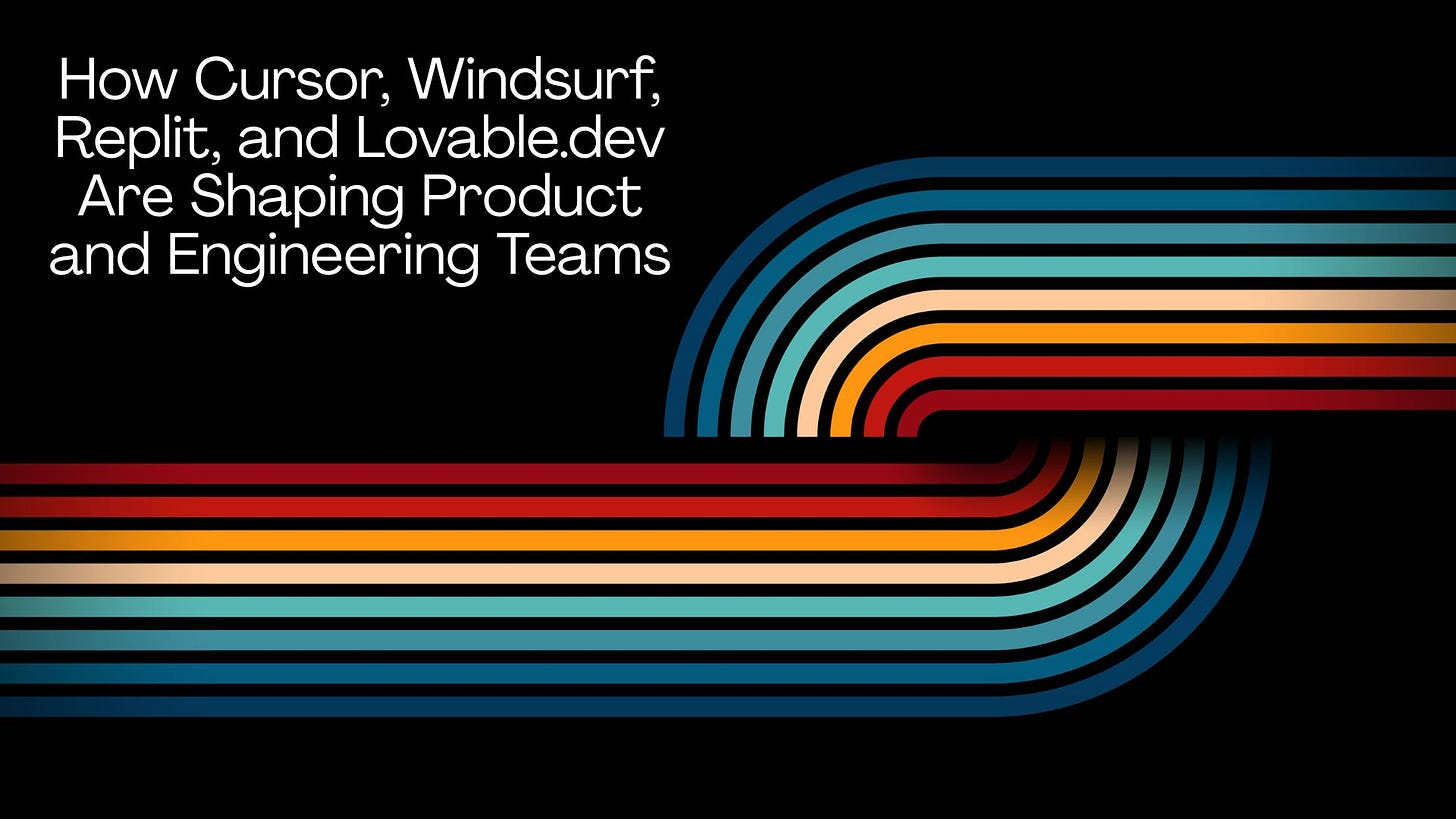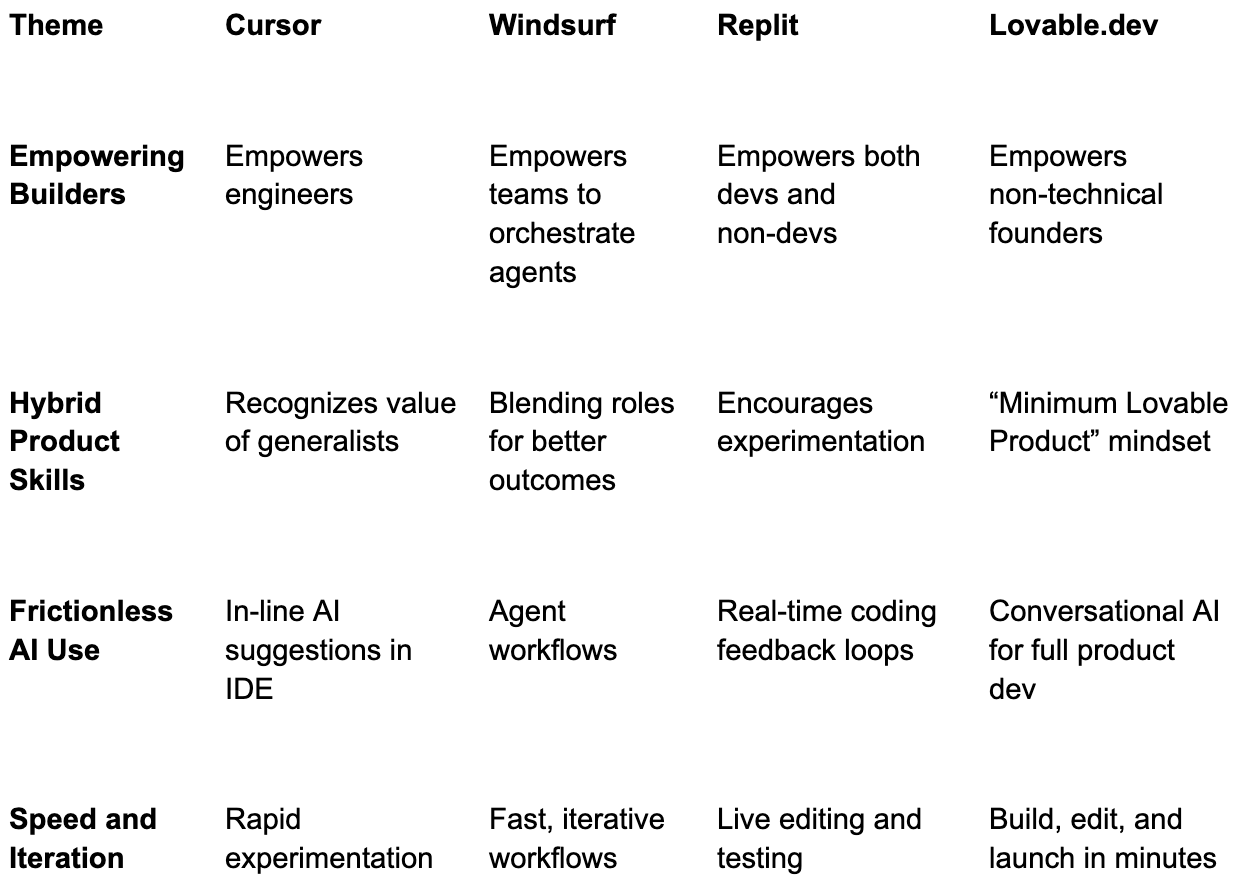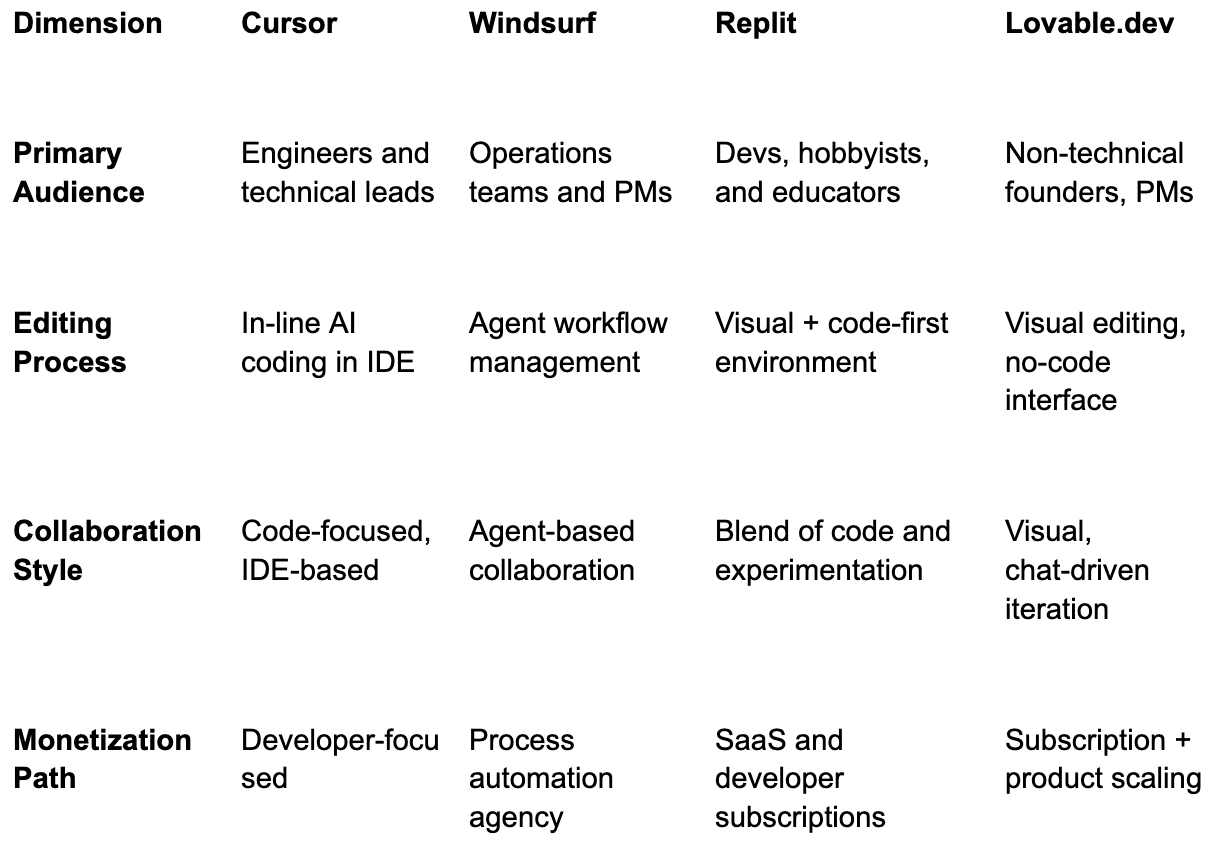How Cursor, Windsurf, Replit, and Lovable.dev Are Shaping Product and Engineering Teams
The Startups Reshaping the SDLC
In the rapidly evolving world of product development and engineering, new AI-powered tools like Cursor, Windsurf, Replit, and Lovable.dev are transforming how ideas become reality. These platforms aren’t just boosting productivity—they’re redefining how products are built, who can build them, and what it means to scale in the modern era. Their stories highlight both the promise and the challenges of the next wave of software creation.
Synthesis of Key Insights
Across these conversations, a few central themes stand out:
Empowering Builders at All Levels
Whether it’s Cursor refining how engineers interact with AI or Lovable.dev making it possible for anyone—regardless of coding skills—to build apps, these tools democratize the creation of software.Engineering Meets Product in Unexpected Ways
As Anton from Lovable.dev observed:
“Doing a bit of everything—being a generalist—is much more important than it used to be.”
Success today requires hybrid skills that blend design, product intuition, and technical depth.Simplicity and Scale
Each platform aims to make once-complex tasks simple. Cursor’s team described their goal as:
“Making coding a conversation, not a battle.”
Likewise, Replit’s intuitive environment shows how reducing friction opens doors for experimentation and rapid iteration.Battle-Tested in the Real World
These aren’t just shiny demos. Replit has helped companies like Sears Home Services leapfrog from COBOL to AI-powered route optimization, while Windsurf emerged from real-world agent workflows.
Common Themes
Differences in Approach or Perspective
Standout Insights
Cursor
“Cursor is about turning coding into a conversation, making complex tasks feel like natural chat.”
Windsurf
“We didn’t start as a dev tool—we started by solving real-world agent workflow problems at scale.”
Replit
“Replit’s edge is empowering even non-technical teams to skip generations of legacy software.”
Lovable.dev
“We want to be the last piece of software anyone writes—removing the bottleneck of finding engineers.”
Comparative Analysis
A central tension runs through these conversations: empowering non-technical creators versus maintaining engineering rigor. Anton from Lovable.dev declared in this episode:
“We’re building for the 99% who don’t write code.”
That’s a bold vision—democratizing product creation in a way that resonates with Replit’s approach, where even Sears Home Services leapt from COBOL to Replit-based AI.
Yet, as Cursor’s founder noted in their episode:
“You want to balance the team so that the peaks of one are the valleys of another.”
This reveals the need for hybrid product and engineering cultures—pairing generalists with deep specialists to create balanced, high-impact teams.
Stories of Origin
What unites these platforms is their roots in scratching their own itches:
Lovable.dev was born when Anton realized that LLMs could finally build products with near-human skill, unlocking opportunities for millions of non-coders.
Cursor emerged from frustration with rigid IDE workflows—transforming them into conversational, AI-assisted experiences.
Replit started as a way to bring coding to everyone—students, hobbyists, and even 100-year-old businesses.
Windsurf didn’t even start as a dev tool at all; it was built to manage real-world agents in complex business scenarios.
Nuanced Examples
Sears Home Services and Replit: Sears leapfrogged entire generations of software by moving from COBOL to AI-powered tools in Replit—showcasing how these tools empower non-technical teams to move fast and thrive.
Anton’s Hiring Philosophy at Lovable.dev: He looks for those who “care a lot and have a superpower.” Their final interview is a work simulation—a powerful reminder that capability today is as much about attitude and curiosity as it is about code.
Actionable Recommendations
For product leaders and decision-makers, here’s what these insights mean:
Embrace AI as a Co-Builder
These tools show that AI isn’t a replacement for humans—it’s a powerful partner. Learn to articulate your product ideas clearly, and AI will help you build faster and better.
Prioritize Speed and Iteration
These platforms thrive on rapid experimentation. Product teams that launch fast and refine even faster will outpace those stuck in traditional roadmaps.
Hire for Product and Technical Hybrid Skills
As Anton suggests, “doing a bit of everything” is the new norm. Balance your team with people who can think like product managers, engineers, and designers all at once.
Test in Real-World Scenarios
Like Lovable.dev’s work simulation hiring approach, prioritize practical tests over resumes. See how candidates handle real, messy product-building challenges.
Stay Curious and Experiment Constantly
Anton’s final advice: spend a week with a new tool, build something end-to-end, and you’ll quickly jump into the top 1% of AI-enabled builders.
For more insights, listen to the full conversations:
🎧 Lovable.dev’s interview with Anton
🎧 Cursor’s story of turning coding into conversations





